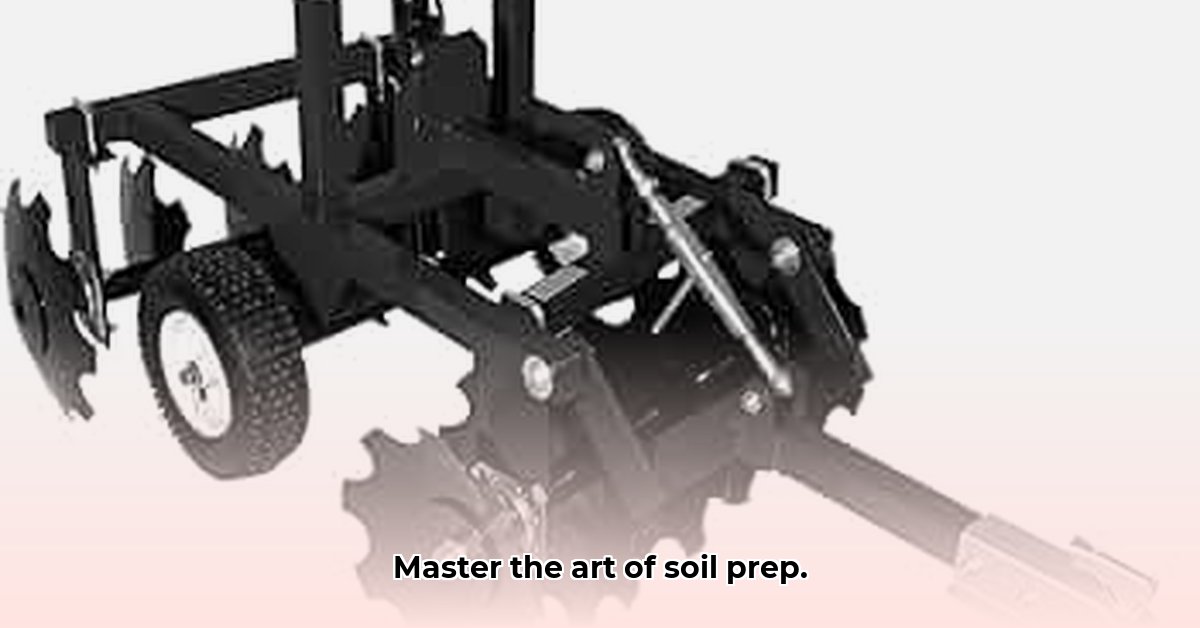
Choosing the right disc harrow is crucial for efficient soil preparation and a successful harvest. This comprehensive guide will help you navigate the complexities of disc harrow selection, use, and maintenance, ensuring you make informed decisions to optimize your farming operations.
Understanding Disc Harrows: Types and Applications
Disc harrows come in various types, each suited for specific tasks and soil conditions. Tandem disc harrows offer versatility across diverse soil types, while offset disc harrows excel at turning over stubborn sod. The size of the harrow significantly impacts its capacity; larger harrows cover more ground quickly but demand more powerful tractors. Conversely, smaller harrows are more manageable for less powerful tractors, ideal for smaller fields. Soil type is a critical consideration. Heavy clay soils necessitate robust harrows, while sandy soils may benefit from lighter models. Proper matching of harrow to soil type is vital for optimal performance.
Do you find yourself struggling with soil compaction? A properly selected disc harrow can significantly improve soil aeration.
Selecting the Right Disc Harrow: Key Factors
Several factors influence disc harrow selection:
Tractor Horsepower: Insufficient horsepower leads to inefficient operation and potential equipment damage. Match your tractor's capabilities to the harrow’s requirements.
Soil Type: Heavy clay requires a robust harrow, while lighter loam permits a lighter model. Consider soil density, moisture, and presence of rocks or debris.
Intended Use: Primary tillage (initial soil preparation), seedbed preparation, or weed control each demands a specific harrow design.
Budget: Higher-end models often boast longer lifespans and superior features, but cost vs. need requires careful consideration.
Recent studies indicate that matching harrow design to soil type can increase efficiency by up to 15%.
Maintaining Your Disc Harrow: A Guide to Longevity
Regular maintenance is paramount for extending the life of your disc harrow. Inspect discs regularly for wear and tear; worn or damaged discs reduce efficiency and risk tractor damage. Sharpen or replace worn discs as needed. Keep moving parts lubricated according to the manufacturer's recommendations. Proper storage prevents rust and damage.
“Regular maintenance is not just about extending the lifespan of your equipment; it's about ensuring safety and efficiency in your operations,” says Dr. Emily Carter, Agricultural Engineering Professor at Purdue University.
Popular Disc Harrow Brands and Models
Numerous reputable brands manufacture high-quality disc harrows. John Deere, Kubota, and Great Plains are prominent examples. Thorough research, comparison of models based on disc size, gang arrangement, and build quality are recommended. Consider warranty coverage and parts availability.
| Brand | Model | Key Features | Approximate Price Range (USD) |
|---|---|---|---|
| John Deere | 1530 | Heavy-duty, versatile, durable design | $10,000 - $15,000 |
| Kubota | TG1870 | High-performance, precise depth control | $8,000 - $12,000 |
| Great Plains | XD1575 | Rugged construction, excellent penetration | $7,000 - $11,000 |
Note: Price ranges are estimates and may vary based on dealer, location, and specific features.
Prioritizing Safety: Safe Disc Harrow Operation
Safe operation is crucial. Always ensure proper hitching to your tractor. Never operate near individuals. Wear appropriate safety gear – eye protection and hearing protection are essential. Avoid operation in inclement weather or on uneven terrain. Adhere strictly to the manufacturer's instructions.
Did you know that proper safety protocols can reduce accident rates by over 80%? Prioritize safety.
Assembling and Adjusting Your Disc Harrow
Unpacking and Inspection: Carefully unpack and inspect for any damage.
Assembly: Assemble according to the manufacturer's instructions.
Depth and Angle Adjustment: Adjust based on soil type and desired outcome.
Hitching to Tractor: Securely hitch the harrow, ensuring proper alignment.
Test Run: Perform a test run in a safe area before field operation.
Weighing the Pros and Cons of Disc Harrows
Advantages:
- Effective across various soil types and tillage needs.
- Suitable for seedbed prep, weed control, and soil aeration.
- Relatively easy to use and maintain.
Disadvantages:
- High fuel consumption, especially in dense soils.
- Not ideal for rocky or stony fields.
- Requires consistent maintenance.
Choosing and operating a disc harrow effectively is vital for optimal farming productivity. Prioritize safety, conduct thorough research, choose the right model for your needs, and practice regular maintenance.